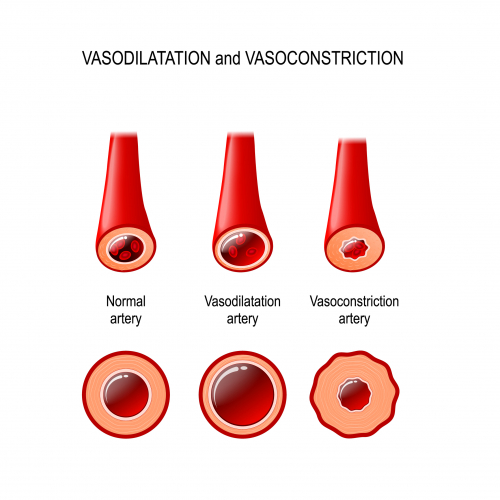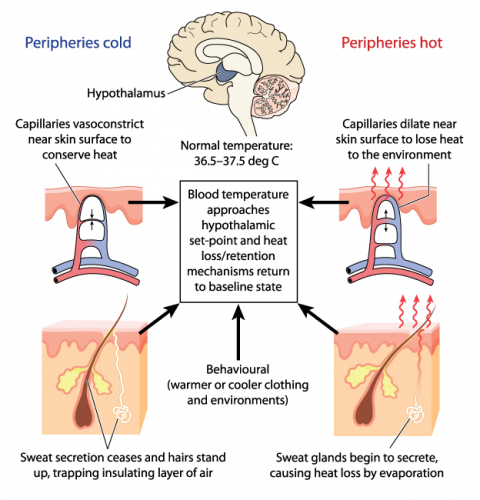It’s vital that our internal temperature stays at 37°C - the perfect temperature for our enzymes!
The thermoregulatory centre in the brain is in charge of this, containing receptors that monitor the temperature of the blood and feed back information to it.
The skin also has temperature receptors and sends nerve impulses to the thermoregulatory centre to update it on our skin temperature.
This communication with the skin is important, because the regulatory centre makes adjustments to our blood vessels if it detects that the temperature is becoming too extreme.
It sorts through all the information it receives and acts as a coordinator of tasks and responses, causing effectors like sweat glands and muscles to perform actions to restabilise body temperature.

There are two mechanisms - one for the cold and one for heat, but both processes use energy transfers between the skin and the environment.
If the temperature of our blood gets too hot, our skin receptors detect the change and send signals to the thermoregulatory centre, which triggers the effectors.
They make our blood vessels widen in vasodilation, making more blood pass closer to the skin and so more heat is lost.
Also, the sweat glands produce sweat that evaporates off us and takes heat with it into the environment.

If we get too cold:
Vasoconstriction occurs, which is the narrowing or constricting of the blood vessels, meaning that less blood goes near the skin and so less heat is lost.
Alongside this, we stop making sweat to conserve thermal energy.
We also start to shiver as our skeletal muscles (like arms and legs) start to contract and relax rapidly to create heat.
The final thing is that hair muscles contract to make our hair stand on end, trapping a layer of air close to the skin to insulate us.
Let's summarise all we've learnt about body temperature regulation:

Do you feel ready for some questions now?








